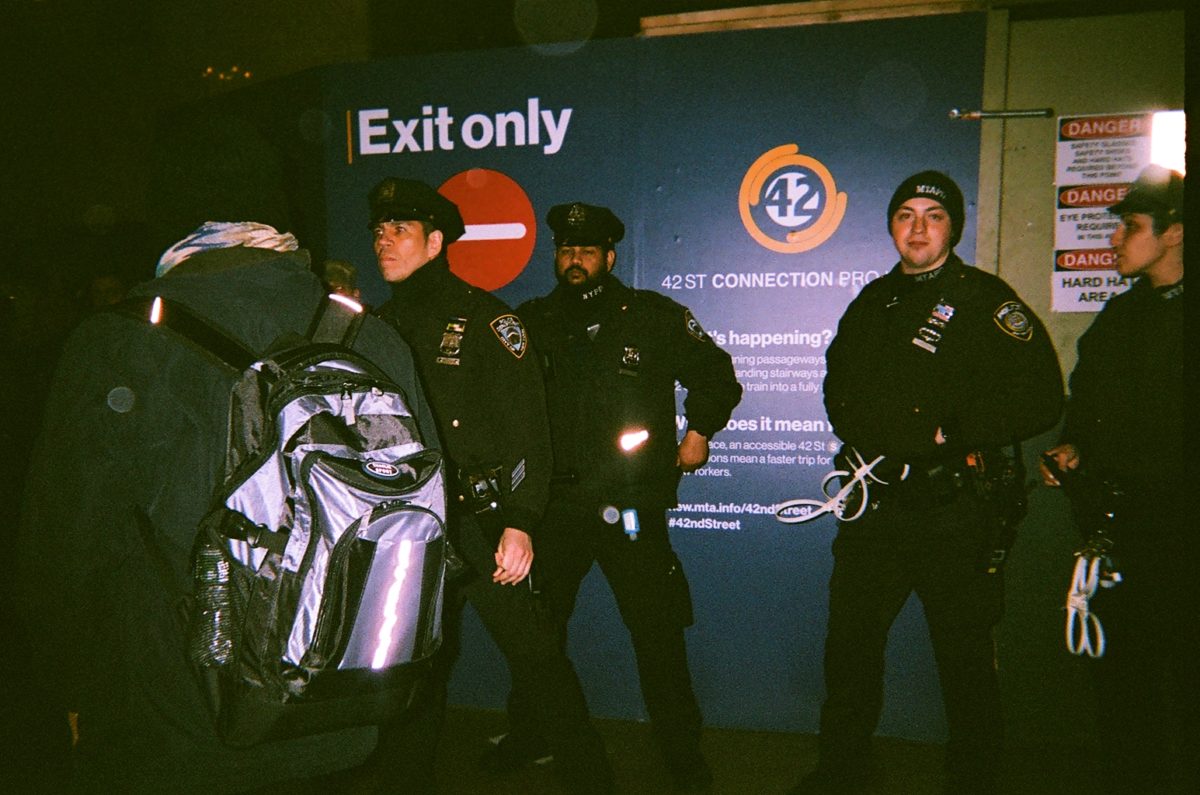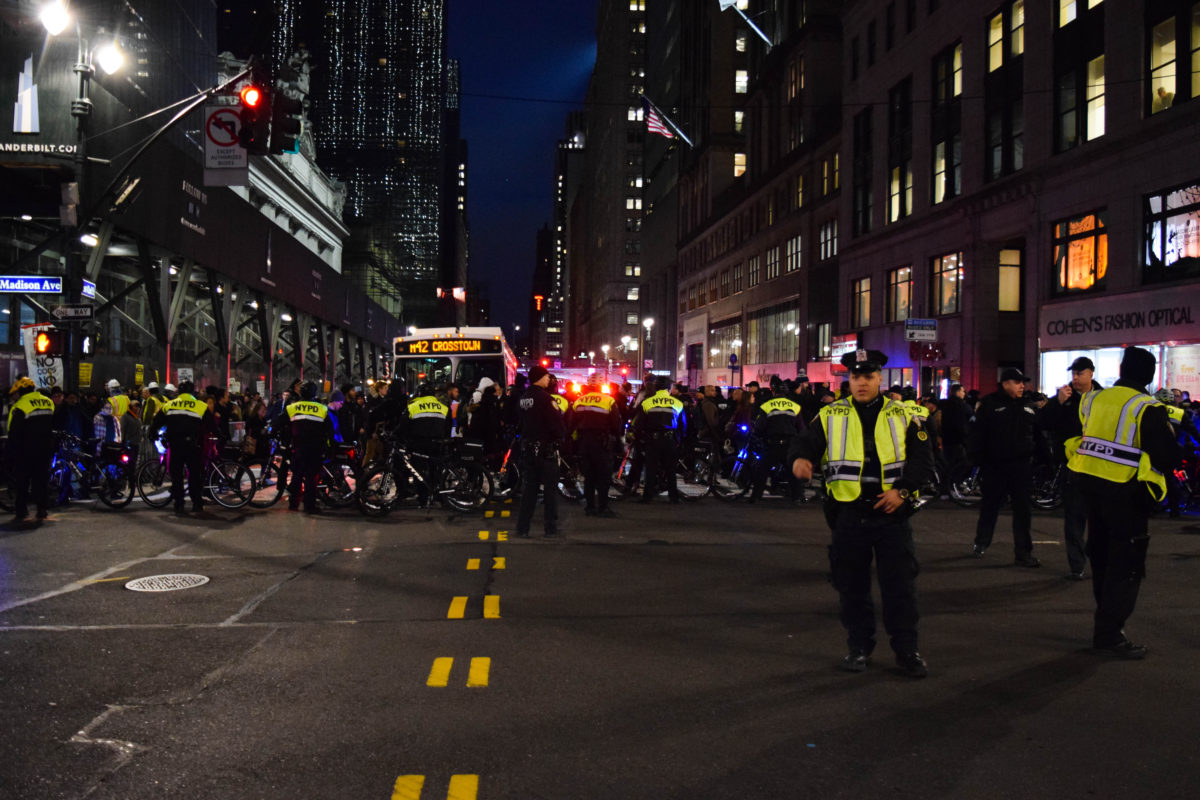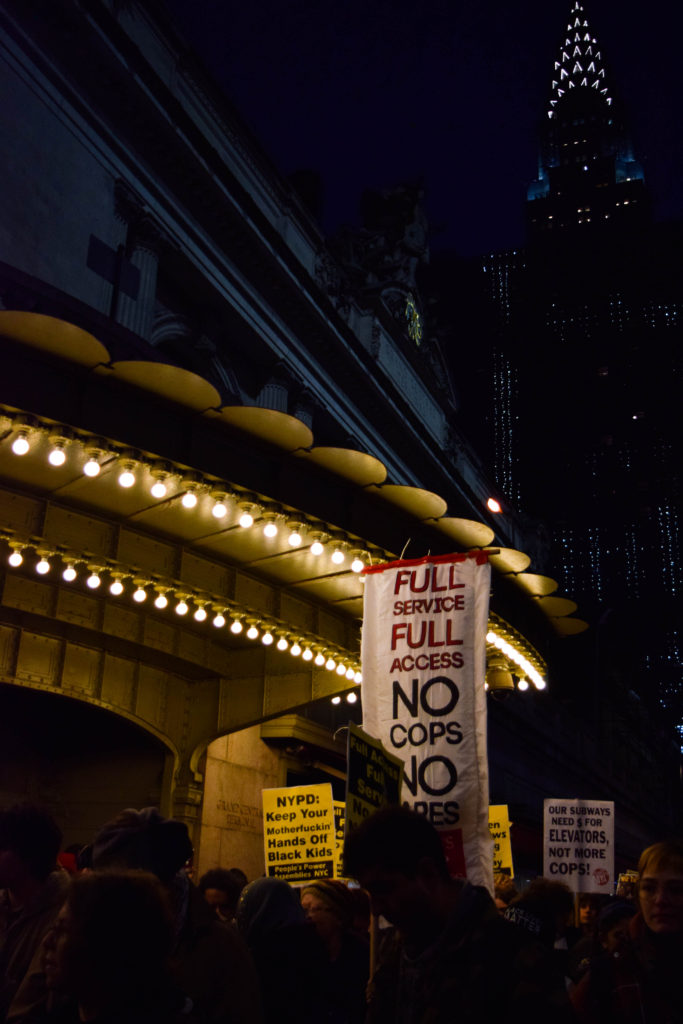New Yorkers are fed up with the current state of the MTA, saying they face numerous issues on a daily basis, including harassment from the police, a lack of accessibility, and high fares.
“The thing is, everyday, no matter what station, there are police there. They have stepped up their obvious presence, they are stepping up their undercover presence. I got stopped by undercovers evading the fare,” said 31-year-old Crown Heights resident Elsa Waithe. “If they were trying to deter people from hopping the turnstiles, why would you be there undercover, why would you hide behind a door, or around the corner? You’re there to catch people, to generate revenue, they would much rather catch you doing a crime than prevent you doing a crime—it has nothing to do with that.”
Blacks and Latinos made up 90 percent of New Yorkers arrested for fare evasion in the fourth quarter of 2019, a New School Free Press analysis of NYPD records shows.
“If you [police] were concerned about fare evasion, stop doing it to black and brown folk.” said Terrea Mitchell of People’s Power Assemblies (PPA), a local advocacy group that fights discrimination and oppression. She continues, ”they are just criminalizing poor people and further criminalizing marginalized communities with these cops.”
The MTA announced plans last fall to hire an additional 500 uniformed officers to patrol subways, bringing the total number of officers in the system to 3,000. The agency defended the decision, saying the officers would prevent crimes in the system.
“NYPD and MTA PD officers act as a deterrent throughout the transit system against those who would violate rules and/or endanger our customers and employees. In some situations when rules or laws are broken, summonses are appropriate,” said Aaron Donovan, MTA spokesman.

MTA Chairman and CEO Patrick J. Foye addressed questions surrounding the police expansion at a press conference after the agency’s December board meeting. According to Foye, the increase would realistically result in an additional “40 to 60 officers per shift.”
But some commuters aren’t buying these explanations. Sabrina Chapa, a graduate student at Milano, said she thought the extra policing would lead to more tension.
“Changes aren’t going to come from the policies, policies are going to bring these fights up,” said Chapa. “I mean we know with the extra 500 police officers in the MTA, public dollars [are] going to basically enforce structural and physical violence on people. And maybe these policies are well intentioned but it’s also like, we’re done with these neo-liberal policies that are just harming people, instead of helping us.”
The MTA’s decision to expand its police force has sparked several protests, with scores of New Yorkers swarming transit hubs to express their anger at the agency.

One such protest, on January 31, saw protestors pack Grand Central Terminal at the height of rush hour. The protest, which according to Gothamist drew over one thousand people, was dubbed “F–k the Police III” and was the third organized since last November by a coalition of city groups, including Decolonize This Place, NYC Shut It Down, and PPA.
“My goal was to get The New School organized on an institutional level, because a lot of people that are here have jobs here,” said Chapa, who helped organize TNS protestors at FTP III. “We don’t just come to school so you can just talk theory all the f–king time.”
“I don’t believe in paying for this service, especially when my money doesn’t go towards making it better but it goes to all the over-policing,” said Waithe. “I’m not a legislator, I’m not here to figure out the solution and I don’t think it’s on the populace to figure out the solution. What we are seeing is ‘we’re mad!’ and the powers-that-be need to figure out the solution.”
The first FTP action took place in Downtown Brooklyn and was a direct response to surfaced videos of officers fighting with teenagers on the MTA. Within a few weeks, a second was announced through a DTP instagram post refuting the hiring of Dermont Shea, New York City Police Commissioner who has long advocated for maintaining the department’s gang database.
Recurring chants shouted at these protests included “No justice, No police, F–k these racist a– police” and “How do you spell racist? NYPD.”

The NYPD condemned violent protestors.
“In no way will this be tolerated. While the NYPD will always protect people’s right to protest, we will not accept illegal behaviour that threatens the safety of others,” said NYPD Chief of Department Terence Monaham in a video posted on Twitter the afternoon of the protest.
“Whenever the narrative is saying what we’re doing is violent, which is what the media says a lot, they fail to acknowledge that it’s actually self-defensive because the first violences are actually structural,” said Chapa. “Getting the general public to acknowledge the structural violence is just as harmful as physical violence, if not worse, because it continues for generations.”
Commuters have other concerns. Evan, a New School student, said that the system is difficult to use for commuters with disabilities.
“For me the main thing is the accessibility; all stops on the subway should be accessible. My mom is in a wheelchair, and for her and everyone else it should be accessible,” said Evan.
Less than 25 percent of Manhattan stations are wheelchair accessible, according to the website Wheelchair Travel.
“Paying $127 every month is the bane of my existence,” said Vienna Vernose, a fourth-year Journalism + Design student at Lang.

According to a New York Times article, Governor Andrew Cuomo stated that the MTA loses $240 million a year because of fare evasion on the subway and buses. Currently, individuals who do not pay the fare are faced with a $100 fine. A reduced-fare Metrocard program for low-income New Yorkers is part of the MTA’s effort towards improving affordability.
“The Fair-Fares program is available to any family meeting income threshold requirements, and we encourage college students and others who qualify to submit applications to the New York City agency that administers the program,” said Donovan.
On Jan. 1, the MTA’s 2020-2024 Capital Plan went into effect—the largest in the corporation’s history. It includes $54.8 billion of investments in the region’s transit system, increasing spending on infrastructure by 70 percent over prior levels. The agency’s website also lists “upgrading stations and improving accessibilities” as one of the plan’s top priorities.
Meanwhile, this movement continues to encourage fellow New Yorkers to take the steps available to them to make transit more accessible.
“They can swipe it forward, they can come to our [PPA] meetings. You can’t solicit a swipe, but if you see someone that needs to be swiped in on your way out, just swipe them in,” said Mitchell.
In an Instagram post, DTP recently put forward the possibility of an FTP IV, but has yet to announce details.
“I’m sure we can look forward to an FTP four, five and six. That’s the thing, it’s not on us to come up with a solution, I’m telling you what the problem is. Nobody hired me to figure out the solution,” said Waithe.
Rebecca Mesonjnik contributed reporting.






